Wireless light switch: selection criteria + review of the best models
A practical wireless light switch is a multifunctional element that allows you to control your home lighting system. It activates light sources by sending a signal from the transmitter to the receiver.
Installation of the module does not require ditching the walls or laying new wiring. You can position the on-off switch anywhere without causing any damage to the decorative finish.
The content of the article:
Wireless Module Components
Structurally, the wireless type switch is very simple and consists of two working components: a receiver and a transmitter. Each of these nodes has its own zone of responsibility and performs strictly defined functions that ensure the correct control of the lighting system.
The device and principle of operation of the receiver
The receiver is a radio-controlled relay, which during operation picks up the corresponding signal and closes the galvanic circuit of household wiring.
A relay is placed in the maximum proximity of the lighting device, or somewhere in the neighborhood, but always in a place falling within the coverage area of the transmitter.

Another option is to mount the element into the junction box, if its dimensions allow it to be done technically. The mini-device is controlled from the remote control, smartphone, tablet, computer via Wi-Fi or via radio waves.
Transmitter specificity
For correct operation, the transmitter does not need to be connected to an active power supply network. Power is provided by autonomous energy sources - batteries.
In more advanced models, there is a small internal generator that generates an electric current at the moment when the user presses a key. The energy impulse arising at this time is transformed into a radio signal, which the receiving device picks up.
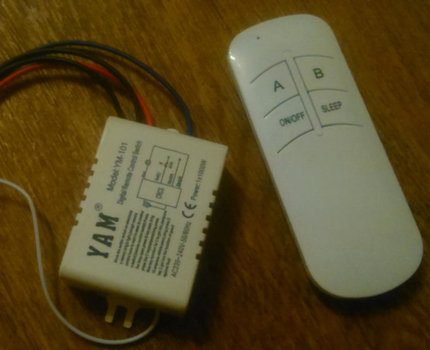
A signal transmitter equipped with an energy generator costs more than a similar battery-powered model. But the price is quickly compensated by the ease of use, and the owners do not have to think every time how not to forget and replace the exhausted batteries in time.
The scope of the device’s coverage depends on many parameters. First of all, this is affected by the general technical characteristics of the product and the structural features of the room (layout, the presence of furniture, false walls, etc.), where the module is located.
Simple budget devices transmit the correct signal within a radius of 20-50 meters. In more advanced models, this figure reaches 350 meters, but the price of such powerful devices is still “biting”.
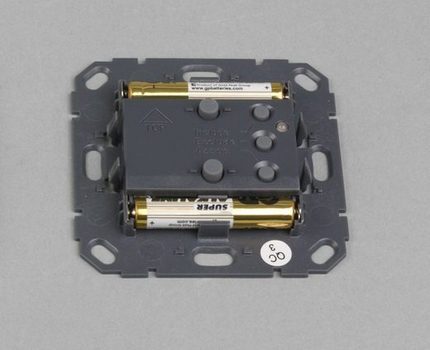
Some manufacturers produce products with advanced functionality. Smart Devices they take on not only the standard control for turning on / off the bulbs, but also regulate the intensity of the lighting devices and the degree of illumination of the room. A special component, a dimmer, ensures the operability of this mode.
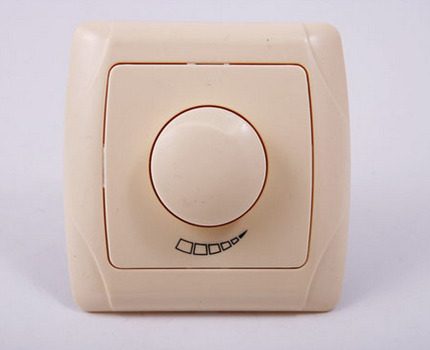
Appointment dimmer switch - adjustment of electric power, responsible for the brightness of the light. The device works normally with both LED and traditional incandescent lamps.
Distinctive features of wireless devices
Modern wireless circuit breakers made under different brands are similar in design and operation.
Devices differ in such parameters as:
- type of control (push-button, touch, remote);
- the ability to control the intensity of the light flux in the room (whether or not);
- the number of devices to be controlled (from 1 to 8, depending on the model and manufacturer).
In addition to the above positions, there are significant differences in functionality. The bulk of the devices simply controls the on / off light in the rooms.
Only advanced models are equipped with such additional features as:
- delayed response - the device does not activate or deactivate immediately at the moment the button is pressed, but somewhat later, for example, while a person is going to bed or leaving the room;
- multichannel control - it is possible to configure several channels, allowing you to simultaneously turn on several devices at once, even located in different rooms of the same building;
- touch panel - there are no buttons that over time can lose sensitivity and fail. To activate the equipment, just touch the display;
- the presence of Wi-Fi - the extension makes it possible to signal through the available gadgets such as a smartphone, tablet or computer with Internet access.
The wider the functionality of the device, the higher its cost.
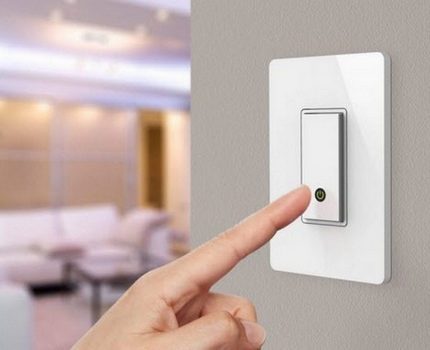
The premium class includes “smart” wireless switches with an extended coverage radius (up to 350 meters), equipped with an internal energy generator, a touch control panel and the possibility of multi-control of the lighting system.
Such devices are usually mounted in large houses, large apartments or country cottages with an extensive lighting system. Budget models include simple battery-powered models. Their coverage is limited to 20-50 meters, which is quite enough for the average city apartment.
Classification by type of management
According to the control method, wireless switches are divided into three groups. The first includes electronic devices that control the lighting system using mechanical buttons. The second includes models with touch control.
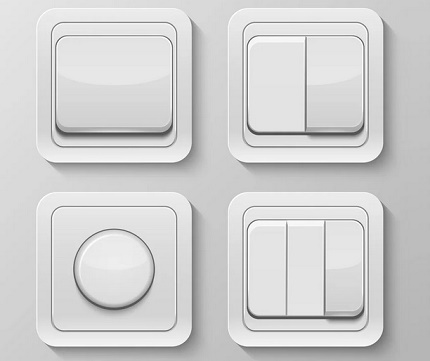
The third group consists of devices equipped with a remote control. He gives digital signals to the switch, which receives them and activates or deactivates lighting devices.
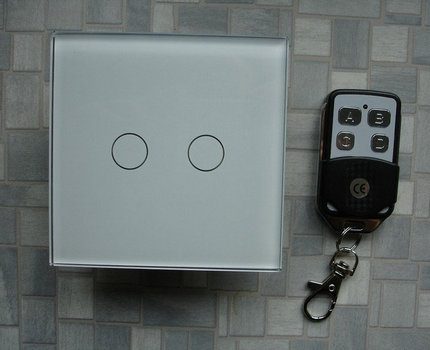
The presence of the remote control allows the owner to simultaneously activate up to 8 wireless systems and allows you to adjust the lighting in the entire apartment or house without getting up from the couch.
The radius of the device depends on criteria such as:
- general layout of the room;
- specific design features;
- type of materials on which work components are placed.
The switch itself is equipped with an autonomous power supply unit that receives the necessary energy from the batteries. The range of remote controls is usually 25 meters. For the correct maintenance of large rooms, it is recommended to install a repeater, otherwise the signal will simply not “reach” the receiving station.
Scope of devices
The scope of use of wireless devices is very wide. Models are placed in apartments where there is a need for installation rocker switch or in the transfer of the old traditional circuit breaker, but this is prevented by the structural features of the room, household appliances and furniture.
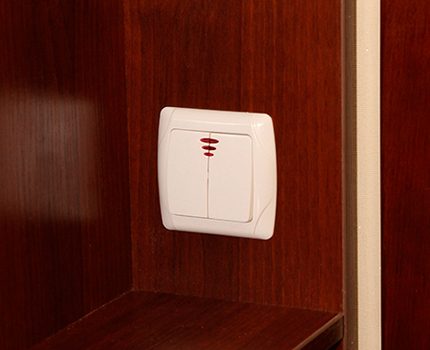
To correct the errors of incorrectly made wiring, you no longer need to dismantle the external wall decoration and punch new strobe channels. The installation of a wireless switch instantly solves the problem. It can be placed in any convenient place, forever forgetting about the difficulties associated with a home lighting system.
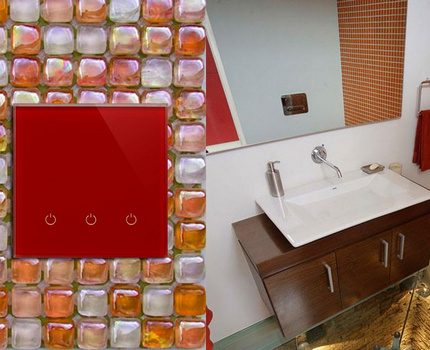
Lack of free space in the living room is another reason for installing a wireless module. The device can be placed on a minimum area and even built into any piece of furniture.
For wooden buildings, where wiring equipment is associated with increased security measures, wireless elements are more than relevant.Of course, you can organize external wiring, however, this is not always consistent with the interior and often spoils the attractiveness of the room.
In addition, open electrical wires are vulnerable to mechanical damage from residents, children and animals. To protect yourself and your home, it’s wiser to install wireless-type modules and no longer worry that a force majeure situation (fire, short circuit, etc.) can occur as a result of damage to the wire.
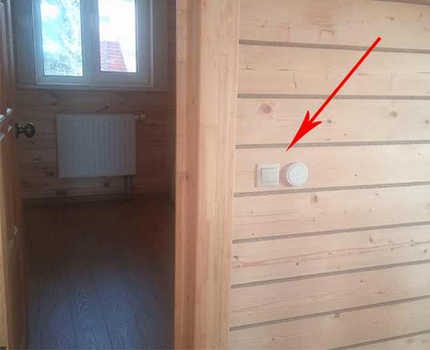
If the room is divided into locations, each of which requires its own type of lighting, it is not at all necessary to do tremendous work and pull the wiring to all the switches.
Simple enough to install wireless devicecapable of controlling multiple light sources and using the remote control to turn on or off lighting devices as needed.
When all repair work is completed in the room and the walls are decorated with a finish coating (wallpaper, fabric, painting, tile, laminate, etc.), but it is urgently necessary to equip another switch, it makes no sense to dismantle the finish and punch additional strobe channels.
It is better to install a practical wireless type device. It will take a minimum of time, and the appearance of the room will not be affected.
To control the lighting system in large cottages, conference rooms, long corridors and other large-scale spaces, wireless modules are simply created. They allow you to turn on the light, being at a great distance from the room or even from the street.
If the building has historical value (old houses, museums, etc.) and making changes to interior solutions is considered unacceptable, it is worth using wireless switches. They will provide full control of the lighting system and easily “hide” in furniture, without betraying their presence and belonging to modern life.
Improving the comfort of your home is an excellent reason to install a wireless system. It will allow owners to control the lighting of rooms and utility rooms, literally, at the touch of a button and adjust the light flux intensity according to personal needs and preferences.
Pros and Cons of Systems
Wireless devices for controlling lighting systems are practical, convenient and modern.
The main advantages of the modules include such positions as:
- an elementary installation that does not entail the dismantling of the finish walls, ditching and laying additional wiring branches;
- the ability to control immediately all the lighting devices available in the room through a single control panel (smartphone, tablet, stationary computer with Internet access);
- a wide radius of the receiving signal - from 20 to 350 meters, depending on the model, layout and degree of workload of the room with furniture and interior elements;
- absolute operational safety for residents - the device is designed for a minimum level of operating current and even with careless use or violation of structural integrity will not cause any harm to human health.
The list of shortcomings is not so wide, but, nevertheless, there are several important points in it.
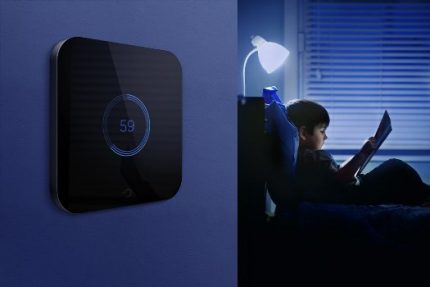
Unstable Wi-Fi negatively affects the performance of the device. The receiver does not pick up a weak, poorly expressed signal, and blocks the user's ability to turn on / off home lighting devices.
What to consider before buying?
You should purchase a wireless module in a specialized store, without fail taking into account such product characteristics as:
- type of bulbs available for control;
- dimensions and general appearance of the product (the material of which the case is made, colors, shape and number of keys);
- operating voltage range;
- number of channels;
- signal coverage radius;
- maximum allowable load during operation;
- rated current level;
- factory equipment;
- list of operating frequencies;
- a method for transmitting a command signal;
- encoding (presence or absence);
- type of transmitter power (generator, battery);
- the period declared by the manufacturer for which the battery capacity is sufficient;
- principle of fastening the device;
- cost.
Additionally, you need to find out from the seller what warranty period the manufacturer gives for the products and where the service centers are located. Full information will help you make the right choice and purchase exactly the model that, in all respects, will satisfy the requirements for the device by the buyer.
Top 5 most popular products
The market for lighting and related communication modules offers a wide range of wireless switches.
All of them are similar in principle, but have a different configuration and seriously differ from each other in appearance, shape, color and available functionality. The choice is made by the buyer, based on their own needs and financial capabilities.
Features of the Feron TM-75 module
Feron TM-75 is made of durable plastic and is designed for a base voltage of 220V. Works correctly with pendant multi-tube chandeliers, LED, spotlights and track lights, sconces and floor lamps.

The wireless unit is equipped with 2 channels with good power. For each of them you can connect a separate group of devices. There is a delay shutdown function, and the coverage radius is 30 meters.
Introducing Inted 220V
The Inted 220V wireless radio switch has a neat but durable plastic case, 1, 2, or 3 keys and a receiver unit. It works on voltage of 220V. The exposure range ranges from 10-50 meters. Bearing walls, false panels and partitions do not affect signal transmission in any way.

Fastens to a wall by means of a double-sided adhesive tape (for single-key products) or by means of self-tapping screws (for devices with 2-3 keys).
A brief overview of the model INTED-1-CH
The INTED-1-CH device has an operating voltage of 220 V and can control a system with a base lamp power of up to 900 watts. It receives signals from the remote control and retransmits them to a distance of 100 meters.
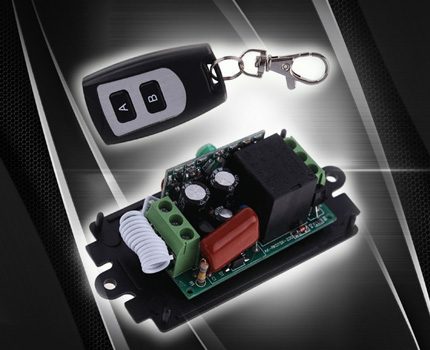
The only negative is the moisture-resistant housing. Because of this, it is not recommended to install the device in wet rooms or on the street without special additional protection.
Characteristic of the device Sapphire-2503
The Sapphire-2503 infrared apparatus, in addition to the basic “filling,” is equipped with a progressive dimmer. True, this element only works correctly with traditional incandescent lamps. The unit is not suitable for controlling energy-efficient light sources.

The case of the model is made of high-strength modern plastic. Permissible operational load is 40-400 watts.
Advantages of the Feron TM72
Feron TM72 looks elegant, fits perfectly into various interior solutions and acts on electrical appliances located within a radius of 30 meters.
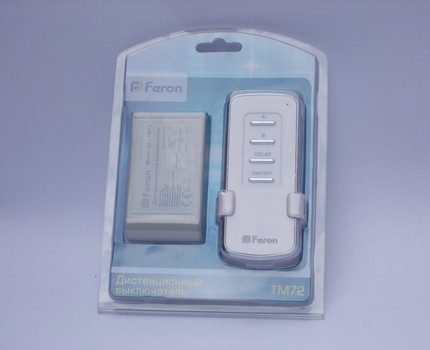
The device has two channels for connecting various light sources. The power of each of them reaches 1 kW.
This makes it possible to fully use a variety of lighting sources in the home system.
Conclusions and useful video on the topic
An interesting overview of wireless switches. Clear and detailed description of structural features. The principle of operation and rules for the use of equipment.
Installation guide for the wireless light on / off device and some interesting features of this work.
Rules for choosing and buying wireless controllers. What you must watch before acquiring, and where you can make concessions. Useful tips from a home master from personal experience
Equipping a lighting system at home, it is worth equipping it with a wireless switch. Installation of the device will not require dismantling the external decoration of the room, making gates in the walls and laying new wiring.
Installation work will take a small amount of time and provide the owners with the opportunity to control home lighting fixtures in the most convenient mode for themselves.
Please leave comments in the block below, ask questions and post photos on the topic of the article. Tell us how you chose the wireless power off device. Share useful information and guidelines on the basis of which you have decided on the model that is best for you.

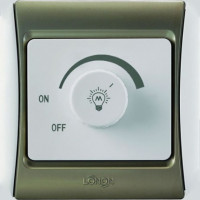 Light switch with dimmer: device, selection criteria and manufacturers review
Light switch with dimmer: device, selection criteria and manufacturers review 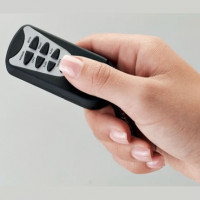 Light switch with remote control: types + overview of TOP brands
Light switch with remote control: types + overview of TOP brands  Touch light switch: why is it needed, types, marking, selection and connection
Touch light switch: why is it needed, types, marking, selection and connection 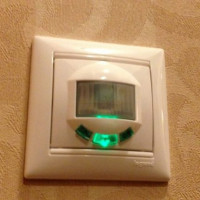 Switch with motion sensor: how to choose and install a light switch with a sensor
Switch with motion sensor: how to choose and install a light switch with a sensor 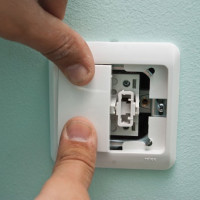 How to disassemble a light switch for repair or replacement
How to disassemble a light switch for repair or replacement  How to install a light switch: step-by-step instructions for connecting typical switches
How to install a light switch: step-by-step instructions for connecting typical switches  How much does it cost to connect gas to a private house: the price of organizing gas supply
How much does it cost to connect gas to a private house: the price of organizing gas supply  The best washing machines with dryer: model rating and customer tips
The best washing machines with dryer: model rating and customer tips  What is the color temperature of light and the nuances of choosing the temperature of the lamps to suit your needs
What is the color temperature of light and the nuances of choosing the temperature of the lamps to suit your needs  Replacement of a geyser in an apartment: replacement paperwork + basic norms and requirements
Replacement of a geyser in an apartment: replacement paperwork + basic norms and requirements
We somehow bought a beautiful chandelier into the living room, controlled it remotely, using the remote control - various lighting modes created a certain atmosphere. Moreover, together with the wireless switch, they left the usual one on the wall. And I always wanted to turn on the light with the clap of my hands, because, in my opinion, even motion sensors lose a little in this regard, because the light sometimes turns on at the wrong time.
Cool stuff! I need to move the switch, but I really do not want to get into the wires. So much dirt, then another wallpaper to re-stick. And you can stick such a switch much more conveniently. Interested in how it has signal stability and how long do the batteries last?
Cordless, Gene, there are different. For example, a HiTE PRO LE-1 radio switch, which costs less than 1000 rubles, has been running on a single battery for 7 years, and Delumo Takto, which costs 2000 rubles, almost three times as long - 24 years. What you mean by “signal stability” is not clear. If you are interested in the range, then both models cover a 250-meter zone "remote control - signal receiver."